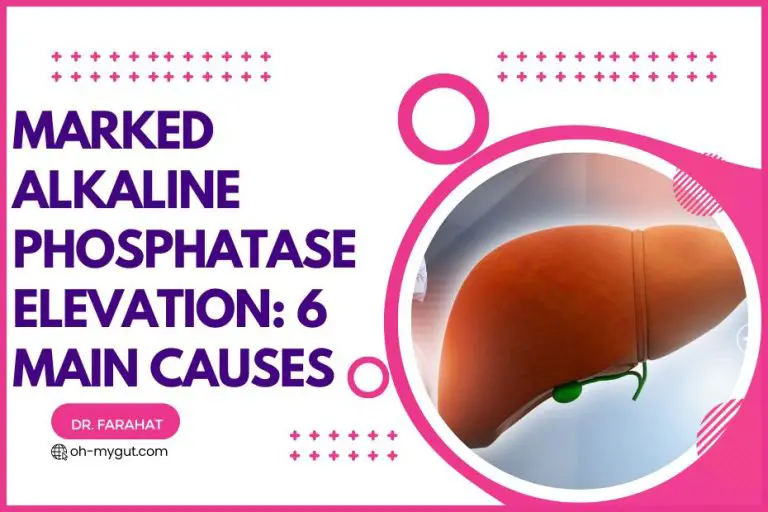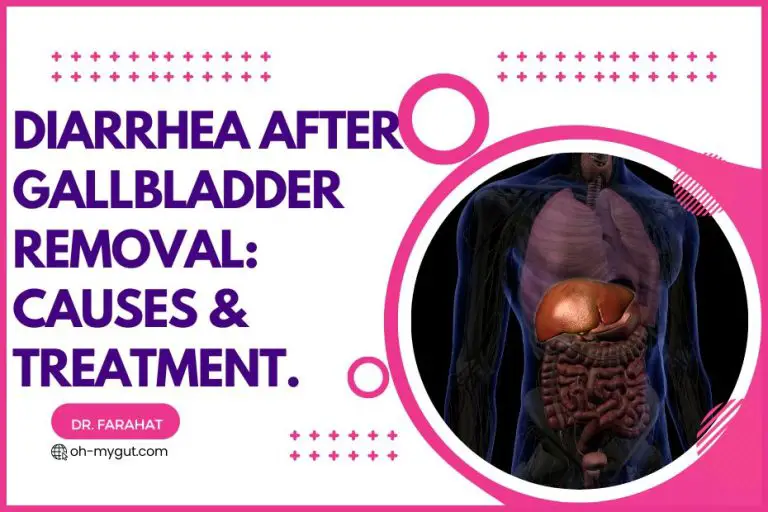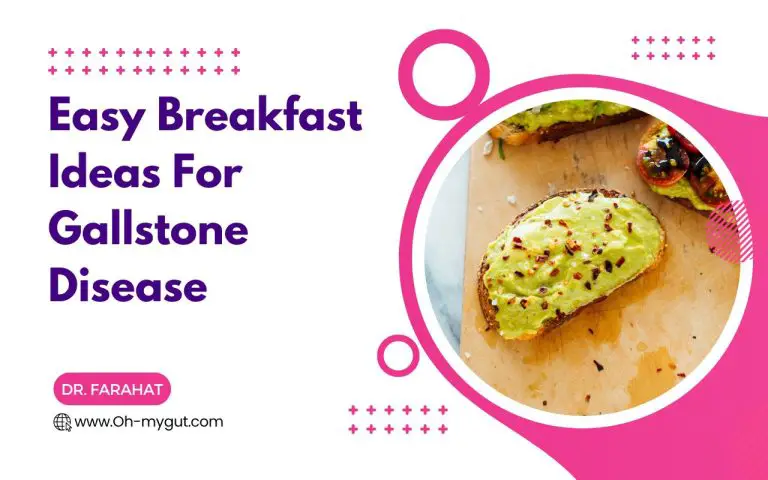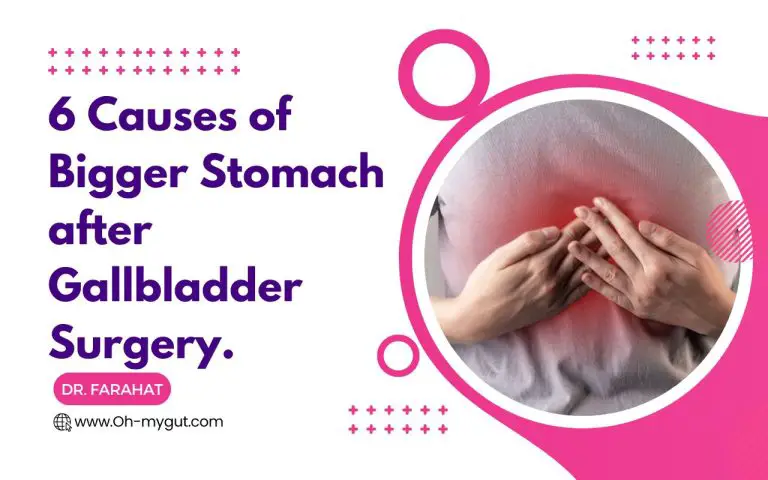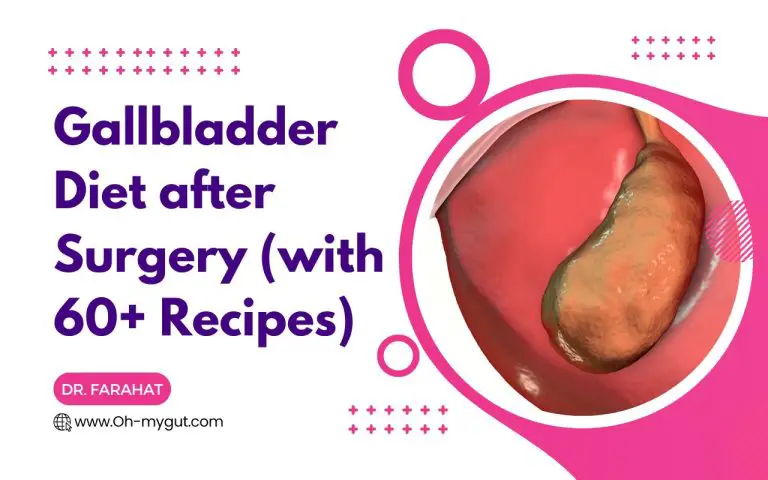Safest Gallbladder Diet after Surgery (with 60+ Recipes)
Our content is not intended nor recommended as a substitute for medical advice by your doctor. Use for informational purposes only.
Following gallbladder removal surgery or cholecystectomy, it’s generally advisable to consume a low-fat diet rich in fruits, vegetables, lean proteins, and whole grains. It can also be beneficial to eat smaller, more frequent meals. But remember, everyone’s digestive system is unique, and what works for one person might not work for another.
Key Facts
- Gallbladder removal surgery is one of the most commonly performed surgeries worldwide.
- After the gallbladder removal, bile isn’t stored and concentrated in the gallbladder anymore but flows directly from the liver into the small intestine.
- This may lead to the body having a harder time digesting fatty and high-fiber foods, potentially causing discomfort and changes in bowel habits.
- There’s no one-size-fits-all diet for everyone after gallbladder surgery. What works well for one person may not work as well for another.
General Dietary Tips After Gallbladder Removal Surgery
Post-cholecystectomy, it’s essential to make some dietary adjustments to accommodate the body’s new way of handling bile and fat digestion. Here are some general tips:
- Gradually Increase Dietary Fat: Immediately after surgery, it’s advisable to stick to a low-fat diet and slowly reintroduce fats. Start with lean proteins, low-fat dairy, and healthy fats from foods like avocados and fish (reference).
- Eat Smaller, Frequent Meals: Instead of three large meals, aim for four to six smaller meals throughout the day. This approach can help avoid overwhelming the digestive system and can mitigate potential side effects like diarrhea (reference).
- Stay Hydrated: Proper hydration aids digestion and can help prevent constipation, which can sometimes occur after surgery.
- Limit High-Fat and High-Sugar Foods: Foods high in fats, especially saturated and trans fats, may be harder to digest post-surgery. Likewise, foods high in sugar can lead to weight gain and other health issues (reference).
- Consume Enough Fiber: A sufficient fiber intake can aid digestion and prevent constipation. However, some people may need to introduce fiber slowly and gradually to avoid gas and bloating.
- Keep a Food Diary: Tracking what you eat and any subsequent symptoms can help identify which foods may cause discomfort, allowing you to make necessary adjustments.
The Most Common Issues After Cholecystectomy and Their Connection to Diet
Post-cholecystectomy, patients may experience changes in digestion. Some of the most common issues include:
- Bloating and Gas: These symptoms can occur if the body has difficulty breaking down fats. Reducing the intake of high-fat foods can often help alleviate these symptoms.
- Diarrhea: Many people experience frequent, loose stools after gallbladder removal. Eating a low-fat diet can often help manage this symptom. about 20% of people experience diarrhea for months after cholecystectomy (reference)
- Constipation: This can occur due to changes in the digestive process or the use of certain pain medications after surgery. Consuming sufficient fluids and dietary fiber can often help relieve constipation.
- Weight Gain or Loss: Some people may lose weight due to dietary changes post-surgery. Others might gain weight as they may be able to consume high-fat foods without experiencing gallbladder pain, as they did before surgery. Balancing the diet and maintaining regular physical activity can help manage weight changes.
In conclusion, the dietary approach after gallbladder surgery should focus on supporting healthy digestion and mitigating potential side effects. It’s advisable to consult with a healthcare provider or a registered dietitian for personalized dietary advice after gallbladder removal. They can consider your overall health, lifestyle, and personal preferences when making dietary recommendations. And remember, the post-cholecystectomy diet isn’t about restricting life but about making it more comfortable and enjoyable.
20 Breakfast ideas after gallbladder surgery.
- Oatmeal with Fresh Fruits:
Components: 1/2 cup of oats, 1 cup of water or milk, a pinch of salt, 1-2 tablespoons of honey or sweetener of choice, 1 cup of fresh fruits.
Method: Boil water or milk in a saucepan, stir in oats and salt. Cook about 10 minutes over medium heat, stirring occasionally. Top with fresh fruits and sweeten to taste. - Whole Grain Toast with Avocado:
Components: 2 slices of whole grain bread, 1 ripe avocado, salt, and pepper.
Method: Toast the bread. Mash the avocado and spread it over the toast. Season with salt and pepper. - Scrambled Eggs with Spinach:
Components: 2 eggs, 2 cups of fresh spinach, 1 tablespoon of olive oil, salt, and pepper.
Method: Heat oil in a pan. Add spinach and cook until wilted. Beat eggs and add them to the pan, scrambling with the spinach. Season with salt and pepper. - Smoothie:
Components: 1 cup of low-fat yogurt, 1 cup of your choice of fruits.
Method: Blend yogurt and fruits in a blender until smooth. - Rice Cakes with Almond Butter:
Components: 2 rice cakes, 2 tablespoons of almond butter.
Method: Spread almond butter on rice cakes. Enjoy! - Low-fat Yogurt with Berries:
Components: 1 cup of non-fat or low-fat yogurt, 1/2 cup of berries.
Method: Top yogurt with berries. - Whole Grain Cereal with Skim Milk:
Components: 1 cup of whole grain cereal, 1 cup of skim milk.
Method: Pour milk over cereal in a bowl. Stir and enjoy. - Banana with Peanut Butter:
Components: 1 banana, 1 tablespoon of peanut butter.
Method: Peel banana, slice and spread with peanut butter. - Quinoa Porridge with Nuts and Seeds:
Components: 1/2 cup of quinoa, 1 cup of water or milk, 1 tablespoon of honey or sweetener of choice, 2 tablespoons of mixed nuts and seeds.
Method: Rinse quinoa under cold water. Boil water or milk in a saucepan, stir in quinoa. Cook about 15 minutes over medium heat, stirring occasionally. Sweeten to taste and top with nuts and seeds. - Whole Wheat Pancakes with Fresh Fruits:
Components: 1 cup of whole wheat flour, 1 cup of low-fat milk, 1 egg, 1 tablespoon of honey or sweetener of choice, 1 cup of fresh fruits.
Method: Mix flour, milk, egg, and sweetener to make a batter. Heat a non-stick pan, pour a ladle of batter, cook until bubbles appear, flip and cook the other side. Top with fresh fruits. - Fruit Salad:
Components: 2 cups of your favorite fruits, cut into bite-sized pieces. Lemon juice (optional).
Method: Toss the fruits together in a bowl. Add a splash of lemon juice if desired. - Egg White Omelette with Veggies:
Components: 3 egg whites, 2 cups of your favorite vegetables (like spinach, bell peppers, onions), 1 tablespoon of olive oil, salt, and pepper.
Method: Sauté vegetables in oil until tender. Beat egg whites and pour over vegetables in the pan. Cook until set, then flip and cook the other side. Season with salt and pepper. - Baked Beans on Whole Grain Toast:
Components: 2 slices of whole grain bread, one can of low-sodium baked beans.
Method: Heat baked beans in a saucepan over medium heat. Toast the bread. Top toast with beans. - Chia Seed Pudding:
Components: 3 tablespoons of chia seeds, 1 cup of almond milk, one tablespoon of honey or sweetener, and 1/2 cup of fresh fruits.
Method: Mix chia seeds and milk in a bowl. Let sit in the fridge for at least 2 hours or overnight. Stir well, sweeten to taste, and top with fresh fruits. - Whole Grain Bagel with Low-fat Cream Cheese:
Components: 1 whole grain bagel, two tablespoons of low-fat cream cheese.
Method: Toast the bagel. Spread cream cheese on the bagel. - Brown Rice Porridge with Apple Slices:
Components: 1/2 cup of brown rice, 2 cups of water, a pinch of salt, 1 apple, sliced.
Method: Rinse rice under cold water. Boil water in a saucepan, stir in rice and salt. Cook for about 40 minutes over medium heat, stirring occasionally. Top with apple slices. - Overnight Oats with Chia Seeds and Banana:
Components: 1/2 cup of oats, 1 cup of milk, one tablespoon of chia seeds, one banana.
Method: Mix oats, milk, and chia seeds in a bowl. Let sit in the fridge overnight. In the morning, stir well and top with banana slices. - Buckwheat Pancakes with Honey:
Components: 1 cup of buckwheat flour, 1 cup of low-fat milk, one egg, one tablespoon of honey.
Method: Mix flour, milk, and egg to make a batter. Heat a non-stick pan, pour a ladle of batter, cook until bubbles appear, flip and cook the other side. Drizzle with honey. - Tofu Scramble with Vegetables:
Components: 200g of tofu, crumbled, 2 cups of your favorite vegetables (like bell peppers, onions, tomatoes), 1 tablespoon of olive oil, salt, and pepper.
Method: Sauté vegetables in oil until tender. Add crumbled tofu and cook for a few minutes. Season with salt and pepper. - Protein Smoothie:
Components: 1 scoop of protein powder, one banana, 1 cup of almond milk.
Method: Blend protein powder, banana, and milk in a blender until smooth.
20 Lunch ideas after gallbladder surgery.
- Grilled chicken salad:
- Components: Skinless chicken breast, mixed lettuce, cucumber, tomatoes, olive oil, and lemon.
- Method: Grill the chicken until cooked thoroughly. In a large bowl, mix the lettuce, cucumber, and tomatoes. Dress the salad with a vinaigrette made from olive oil and lemon juice. Add the grilled chicken on top.
- Lentil soup:
- Components: Lentils, onions, carrots, celery, and low-sodium chicken broth.
- Method: Rinse lentils and set aside. In a pot, sauté onions, carrots, and celery until softened. Add lentils and broth. Bring to a boil then reduce to a simmer until lentils are tender.
- Baked salmon with quinoa and steamed vegetables:
- Components: Salmon fillet, lemon, dill, quinoa, and your choice of vegetables.
- Method: Preheat your oven to 375°F (190°C). Season the salmon with lemon juice and dill, then wrap in foil and bake for about 20 minutes. While the salmon is cooking, prepare the quinoa according to package instructions and steam your vegetables.
- Stir-fry with tofu and vegetables:
- Components: Tofu, a mix of vegetables (like bell peppers, broccoli, and snap peas), olive oil.
- Method: Press the tofu to remove excess moisture then cut into cubes. Heat olive oil in a wok or large frying pan, add tofu and stir-fry until golden. Add vegetables and cook until they’re tender.
- Whole grain pasta with marinara sauce:
- Components: Whole grain pasta, low-fat, low-sodium marinara sauce.
- Method: Cook the pasta according to package instructions. Heat the marinara sauce in a separate pot. Once the pasta is cooked, drain it and serve with the marinara sauce.
- Turkey sandwich:
- Components: Whole grain bread, low-fat cheese, lean turkey slices, lettuce, tomato, and avocado.
- Method: Spread mashed avocado on the bread, add the turkey slices, cheese, lettuce, and tomato. Top with the second slice of bread.
- Baked sweet potato with steamed broccoli:
- Components: Sweet potato, broccoli.
- Method: Preheat your oven to 400°F (200°C). Pierce the sweet potato with a fork several times and place it on a baking sheet. Bake until tender, about 45 minutes. While the potato is baking, steam your broccoli until tender.
- Vegetable sushi rolls:
- Components: Sushi rice, nori seaweed, cucumber, carrot, and avocado.
- Method: Prepare the sushi rice according to package instructions. Once the rice is cooled, lay out a sheet of nori. Spread the rice on the nori, leaving a small space at the top and bottom. Lay the vegetables in the center, then roll up the sushi using a bamboo mat.
- Chicken and vegetable stir-fry:
- Components: Lean chicken breast, mixed vegetables, olive oil.
- Method: Cut the chicken into bite-sized pieces. Heat the oil in a wok or large frying pan, add the chicken and cook until no longer pink. Add the vegetables and cook until they’re tender.
- Tuna salad:
- Components: Canned tuna in water, chopped celery, cucumber, and low-fat Greek yogurt.
- Method: Drain the tuna and place it in a bowl. Add the chopped celery and cucumber. Mix in the Greek yogurt until everything is combined.
- Vegetable Soup: Components: 2 cups of mixed vegetables (carrots, celery, onion, peas, corn), 4 cups of vegetable broth, 2 teaspoons of your favorite herbs (basil, thyme, oregano), salt, and pepper. Method: Sauté the vegetables in a large pot until softened. Add the vegetable broth and herbs. Season with salt and pepper. Simmer for about 20 minutes.
- Quinoa Salad: Components: 2 cups of cooked quinoa, 1 can of black beans (drained and rinsed), 1 cup of corn, 1 diced tomato, 1 diced cucumber, lime vinaigrette (1/4 cup of olive oil, juice of 2 limes, 1 minced garlic clove, salt and pepper). Method: Mix quinoa, beans, corn, tomato, and cucumber. In a separate bowl, whisk together the vinaigrette ingredients. Toss the salad with the vinaigrette.
- Brown Rice with Grilled Shrimp and Bell Peppers: Components: 2 cups of cooked brown rice, 1 pound of shrimp, 2 bell peppers, sliced, 1 tablespoon of olive oil, salt, and pepper. Method: Heat oil in a grill pan. Add shrimp and bell peppers, season with salt and pepper, and grill until the shrimp are pink and the peppers are softened. Serve over cooked brown rice.
- Egg Salad Sandwich: Components: 2 slices of whole grain bread, 4 hard-boiled eggs, 1 tablespoon of low-fat mayonnaise, 1 tablespoon of fresh herbs (chives, dill), salt, and pepper. Method: Mash the eggs with a fork, then stir in mayonnaise and herbs. Season with salt and pepper. Spread the egg salad on the bread to make a sandwich.
- Turkey and Vegetable Wrap: Components: 1 whole grain tortilla, 2 slices of lean turkey, a variety of vegetables (lettuce, tomato, cucumber, bell pepper), 1 tablespoon of low-fat mayo or mustard. Method: Spread mayo or mustard on the tortilla. Layer turkey and vegetables on top. Roll up the tortilla.
- Chickpea Salad: Components: 2 cups of cooked chickpeas, 1 diced cucumber, 2 diced tomatoes, 1 diced bell pepper, light vinaigrette (1/4 cup of olive oil, juice of 1 lemon, 1 minced garlic clove, salt and pepper). Method: Mix chickpeas, cucumber, tomatoes, and bell pepper. In a separate bowl, whisk together the vinaigrette ingredients. Toss the salad with the vinaigrette.
- **Whole Grain Pita with Hummus and Veggies:**Components: 1 whole grain pita, 2 tablespoons of hummus, sliced cucumber, bell pepper, and carrots. Method: Spread hummus on pita. Serve with sliced vegetables.
- Roasted Vegetable Salad: Components: 2 cups of your favorite vegetables (bell peppers, onions, zucchini, cherry tomatoes), 1 tablespoon of olive oil, salt and pepper, mixed greens. Method: Toss vegetables in oil, salt, and pepper. Roast in a 400°F (200°C) oven until tender, about 20 minutes. Serve over mixed greens.
- Baked Cod with Brown Rice and Steamed Asparagus: Components: 1 cod fillet, juice of 1 lemon, 1 teaspoon of your favorite herbs (dill, parsley), 2 cups of cooked brown rice, 1 bunch of asparagus, steamed. Method: Preheat the oven to 400°F (200°C). Season the cod with lemon, herbs, salt, and pepper. Bake until the fish is cooked through, about 15 minutes. Serve with cooked brown rice and steamed asparagus.
- Whole Grain Toast with Avocado and Poached Egg: Components: 1 slice of whole grain bread, one ripe avocado, one egg, vinegar, salt, and pepper. Method: Toast the bread. Mash the avocado and spread it on the toast. Poach the egg in simmering water with a splash of vinegar for about 3 minutes for a runny yolk. Place the egg on top of the avocado. Season with salt and pepper.
15 Dinner ideas to eat after gallbladder surgery.
- Grilled Fish with Zucchini:
Components: 1 fillet of white fish (like cod or tilapia), 1 medium zucchini sliced, 1 tablespoon of olive oil, salt, and pepper.
Method: Season the fish and zucchini slices with olive oil, salt, and pepper. Grill on medium-high heat for about 4 minutes on each side. - Baked Chicken Breast with Steamed Carrots:
Components: 1 chicken breast, 1 teaspoon of your favorite herbs (thyme, oregano), 2 medium carrots cut into batons, salt, and pepper.
Method: Preheat the oven to 400°F (200°C). Season the chicken with herbs, salt, and pepper. Bake for 25 minutes, or until cooked through. Steam the carrots until tender. - Spaghetti with Marinara Sauce:
Components: 2 cups of whole grain spaghetti, 2 cups of marinara sauce, 1 tablespoon of olive oil, salt.
Method: Cook the spaghetti in boiling salted water until al dente. In a separate pan, heat the marinara sauce. Toss the cooked spaghetti in the sauce. - Baked Turkey Meatballs with Brown Rice:
Components: 1 pound of ground turkey, 1/4 cup of whole grain breadcrumbs, 1 egg, 1 teaspoon of herbs (basil, oregano), 2 cups of cooked brown rice, salt, and pepper.
Method: Preheat the oven to 400°F (200°C). Mix the turkey, breadcrumbs, egg, herbs, salt, and pepper. Form into meatballs and place on a baking sheet. Bake for 20 minutes, or until cooked through. Serve with cooked brown rice. - Grilled Shrimp Skewers with a Side Salad:
Components: 1 pound of shrimp, 1 tablespoon of olive oil, mixed salad greens, low-fat vinaigrette, salt, and pepper.
Method: Toss the shrimp in olive oil, salt, and pepper. Thread onto skewers and grill on medium-high heat for 2 minutes on each side. Serve with a side salad dressed with vinaigrette. - Stir-Fried Tofu with Mixed Vegetables:
Components: 1 block of firm tofu, cubed, 2 cups of mixed vegetables (carrots, bell peppers, snow peas), 1 tablespoon of low-sodium soy sauce, 1 tablespoon of olive oil.
Method: Heat oil in a pan. Add the tofu and stir-fry until golden. Remove and set aside. In the same pan, add the vegetables and stir-fry until tender. Add the tofu back into the pan and stir in soy sauce. - Roasted Salmon with Sweet Potatoes:
Components: 1 salmon fillet, 1 medium sweet potato, cubed, 1 tablespoon of olive oil, salt, and pepper.
Method: Preheat the oven to 400°F (200°C). Season the salmon and sweet potato with olive oil, salt, and pepper. Place on a baking sheet and roast until the salmon is cooked through and the sweet potatoes are tender, about 20 minutes. - Broiled White Fish with Quinoa:
Components: 1 fillet of white fish (like cod or tilapia), 2 cups of cooked quinoa, 1 tablespoon of olive oil, salt, and pepper.
Method: Preheat the broiler. Season the fish with olive oil, salt, and pepper. Broil until the fish is cooked through, about 8 minutes. Serve with cooked quinoa. - Turkey Chili with Beans:
Components: 1 pound of ground turkey, 1 can of kidney beans (drained and rinsed), 1 can of diced tomatoes, 1 tablespoon of chili powder, 1 onion, chopped, 1 tablespoon of olive oil, salt, and pepper.
Method: Heat oil in a pot. Add the onion and sauté until softened. Add the turkey and cook until browned. Add the beans, tomatoes, chili powder, salt, and pepper. Simmer for about 20 minutes. - Steamed Mussels with Whole Grain Bread:
Components: 1 pound of mussels, cleaned, 1 cup of white wine, 1 garlic clove, minced, 2 slices of whole grain bread.
Method: In a large pot, combine the wine and garlic. Bring to a simmer. Add the mussels, cover, and steam until they open, about 5 minutes. Discard any that do not open. Serve with whole grain bread. - Lentil and Vegetable Curry with Basmati Rice:
Components: 1 cup of lentils, 2 cups of mixed vegetables (carrots, peas, bell peppers), 2 cups of curry sauce, 2 cups of cooked basmati rice.
Method: Cook the lentils according to the package instructions. In a separate pan, sauté the vegetables until softened. Add the curry sauce and cooked lentils. Simmer for about 10 minutes. Serve with cooked basmati rice. - Chicken Fajitas with Corn Tortillas:
Components: 1 chicken breast, sliced, 1 bell pepper, sliced, 1 onion, sliced, 2 corn tortillas, 1 tablespoon of olive oil, fajita seasoning.
Method: Heat oil in a pan. Add the chicken and cook until no longer pink. Add the bell pepper, onion, and fajita seasoning. Cook until the vegetables are tender. Serve in corn tortillas. - Stir-Fried Lean Beef with Broccoli and Brown Rice:
Components: 1/2 pound of lean beef, sliced, 2 cups of broccoli florets, 2 cups of cooked brown rice, 1 tablespoon of low-sodium soy sauce, 1 tablespoon of olive oil.
Method: Heat oil in a pan. Add the beef and stir-fry until browned. Add the broccoli and soy sauce. Cook until the broccoli is tender. Serve with cooked brown rice. - Baked Trout with Wild Rice:
Components: 1 trout fillet, 2 cups of cooked wild rice, 1 tablespoon of olive oil, salt, and pepper.
Method: Preheat the oven to 400°F (200°C). Season the trout with olive oil, salt, and pepper. Bake until the fish is cooked through, about 15 minutes. Serve with cooked wild rice. - Vegetable Lasagna with Whole Wheat Noodles:
Components: 9 whole wheat lasagna noodles, 1 jar of marinara sauce, 2 cups of mixed vegetables (spinach, zucchini, bell peppers), 1 cup of low-fat ricotta cheese, 1/2 cup of low-fat mozzarella cheese.
Method: Preheat the oven to 375°F (190°C). Cook the lasagna noodles according to the package instructions. In a baking dish, layer noodles, marinara sauce, vegetables, and ricotta. Repeat the layers until all the ingredients are used up. Top with
10 recipes for post-cholecystectomy diarrhea.
Post-cholecystectomy diarrhea can be managed with a diet that’s low in fat and high in fiber. Here are some recipe ideas:
- Apple Cinnamon Oatmeal:
Components: 1 cup of water, 1/2 cup of oats, 1 apple (chopped), 1/2 teaspoon of cinnamon. Method: In a saucepan, bring water to a boil. Add oats, reduce heat and simmer, stirring occasionally, for 10 minutes. Add the apple and cinnamon, cook for another 5 minutes or until oatmeal is at your desired consistency.
2. Roasted Butternut Squash Soup:
Components: 1 butternut squash (peeled and cubed), 1 onion (diced), 4 cups of low sodium vegetable broth, 1 teaspoon of olive oil, salt and pepper. Method: Preheat oven to 400°F (200°C). Toss squash with olive oil, salt and pepper and roast for about 25-30 minutes until tender. In a large pot, sauté onion until soft, add roasted squash and vegetable broth. Bring to boil and then simmer for 10-15 minutes. Puree the mixture with an immersion blender or in a countertop blender, in batches, if necessary.
3. Brown Rice with Steamed Veggies:
Components: 1 cup of cooked brown rice, 2 cups of mixed vegetables (broccoli, carrots, bell peppers). Method: Steam the vegetables until they are tender-crisp. Serve over cooked brown rice.
4. Grilled Chicken and Quinoa Salad:
Components: 1 chicken breast, 1 cup of cooked quinoa, mixed salad greens, 1 tablespoon of olive oil, salt and pepper. Method: Season the chicken with salt and pepper and grill until cooked through. Slice the chicken and serve over mixed greens and cooked quinoa.
5. Whole Wheat Pasta with Marinara Sauce:
Components: 2 cups of whole wheat pasta, 2 cups of marinara sauce. Method: Cook the pasta in boiling water according to package instructions until al dente. Heat the marinara sauce in a separate pot. Drain the pasta and toss with the marinara sauce.
6. Baked Sweet Potato:
Components: 1 sweet potato, 1 teaspoon of olive oil, salt and pepper. Method: Preheat your oven to 400°F (200°C). Pierce the sweet potato a few times with a fork. Rub with oil and season with salt and pepper. Bake until tender, about 45 minutes to 1 hour.
7. Vegetable Stir-Fry with Tofu:
Components: 1 block of firm tofu, 2 cups of mixed vegetables (bell peppers, carrots, peas), 1 tablespoon of low-sodium soy sauce, 1 tablespoon of olive oil. Method: Press the tofu to remove excess moisture and cut into cubes. Heat oil in a pan. Add the tofu and stir-fry until golden. Remove and set aside. In the same pan, add the vegetables and stir-fry until tender. Add the tofu back into the pan and stir in soy sauce.
8. Baked Salmon with Dill:
Components: 1 salmon fillet, 1 teaspoon of fresh dill, 1 lemon slice, salt and pepper. Method: Preheat your oven to 400°F (200°C). Place salmon on a baking sheet, season with salt, pepper, and dill. Top with a lemon slice. Bake until the salmon is cooked through, about 12-15 minutes.
9. Whole Grain Toast with Avocado:
Components: 1 slice of whole grain bread, 1/2 ripe avocado, salt and pepper. Method: Toast the bread. Mash the avocado and spread on the toast. Season with salt and pepper.
10. Vegetable Frittata:
Components: 4 eggs, 2 cups of mixed vegetables (spinach, bell peppers, zucchini), 1 teaspoon of olive oil, salt and pepper. Method: Preheat your oven to 375°F (190°C). In a large oven-safe skillet, sauté vegetables with olive oil until tender. Beat the eggs with salt and pepper and pour over the vegetables. Cook until the eggs are set on the bottom. Transfer the skillet to the oven and bake until the eggs are fully set, about 10-15 minutes.
- Evidence-based
- Written by a doctor.

